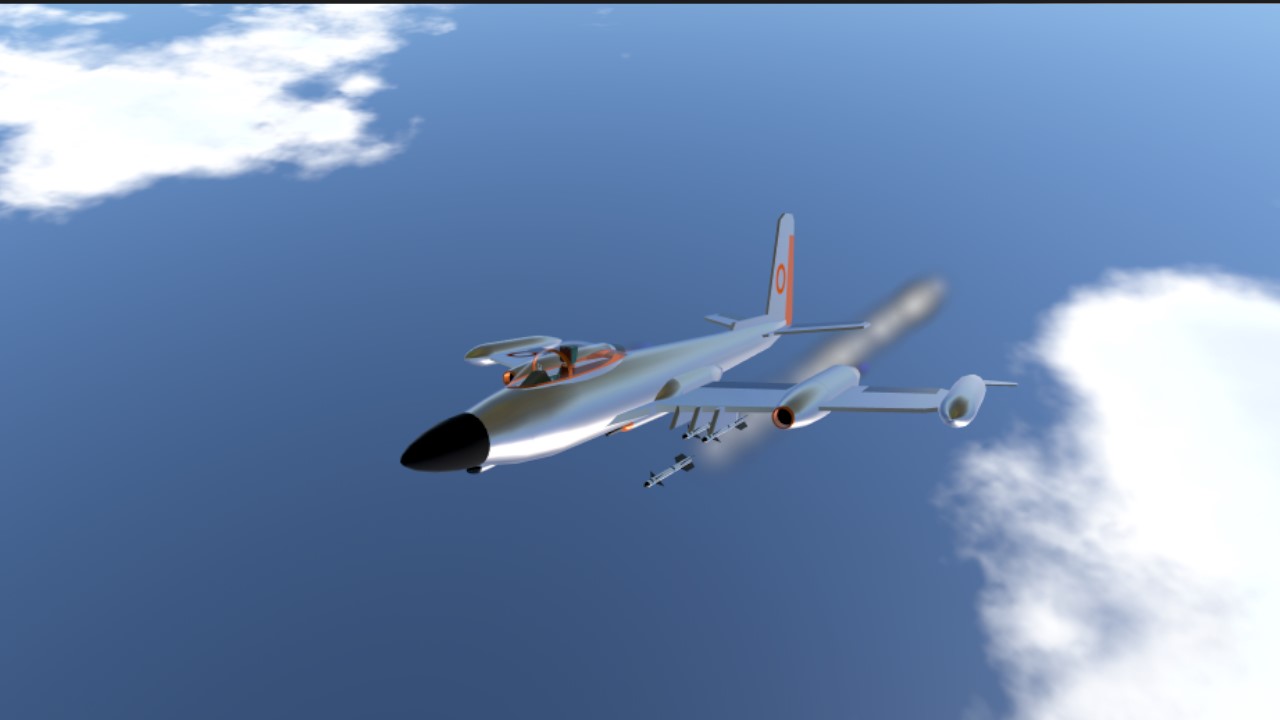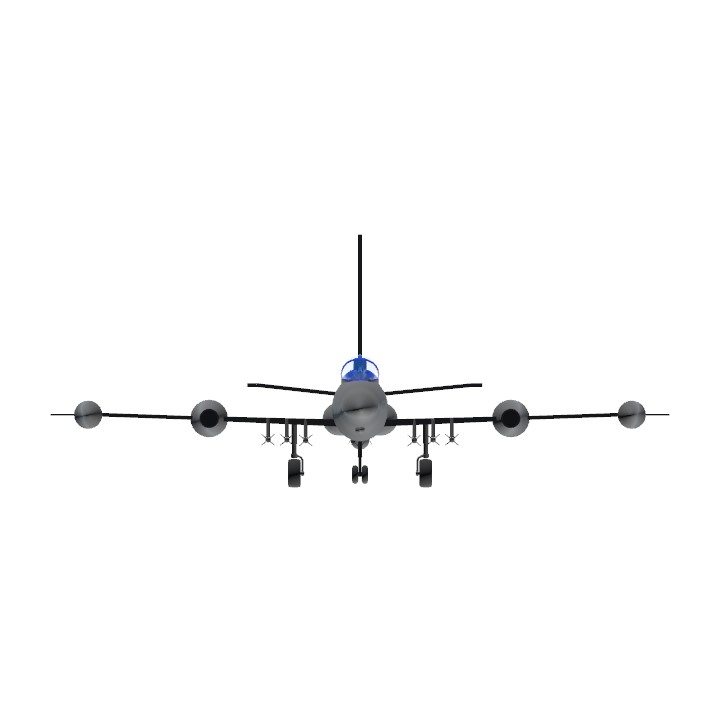When it entered service in 1952, 2 years behind schedule, the i.7 was arguably the most advanced aircraft of its time. Not just wickedly fast and deceptively nimble for its size, it boasted a powerful radar and computer combination that could almost entirely automate the interception process. Like it's predecessor, the i.5, it could recieve guidance to target from the Semi Autonomous Air Defence Network (SAADN).
It carried 6 Firefly missiles that could be fired either individually or in a massive salvo, and a 12.7mm rotary gun for which the fire control computer could provide assistance calculating lead on a target locked up by the radar.
--Action Groups--
AG1: Open Cockpit
AG2: Fire Missile Volly/Jettison innert missiles
AG8: Arm Missiles (Armed by default)
VTOL: Flaps
Throttle above 95%: Engage reheat
As a nice change from her predecessor, the i.7 is relatively docile when it comes to landing, however it's brakes are a little anemic so give yourself plenty of runway and use flaps to come in nice and slow.
--Typical Interception--
Take off and climb to around 10,000m. Locate target and move to within 2.5km and hold them within the radar illumination ring. Engage volly fire (AG2). If target persists, engage with the gun.
Thank you for checking this out! I hope you have as much fun flying and modifying this as I did making it. I'm really enjoying playing around with this era of interceptors, they all have so much character haha!
Specifications
General Characteristics
- Created On Windows
- Wingspan 53.7ft (16.4m)
- Length 62.8ft (19.1m)
- Height 21.6ft (6.6m)
- Empty Weight 19,760lbs (8,963kg)
- Loaded Weight 39,035lbs (17,706kg)
Performance
- Power/Weight Ratio 1.709
- Wing Loading 56.2lbs/ft2 (274.3kg/m2)
- Wing Area 694.8ft2 (64.6m2)
- Drag Points 6801
Parts
- Number of Parts 136
- Control Surfaces 8
- Performance Cost 768






